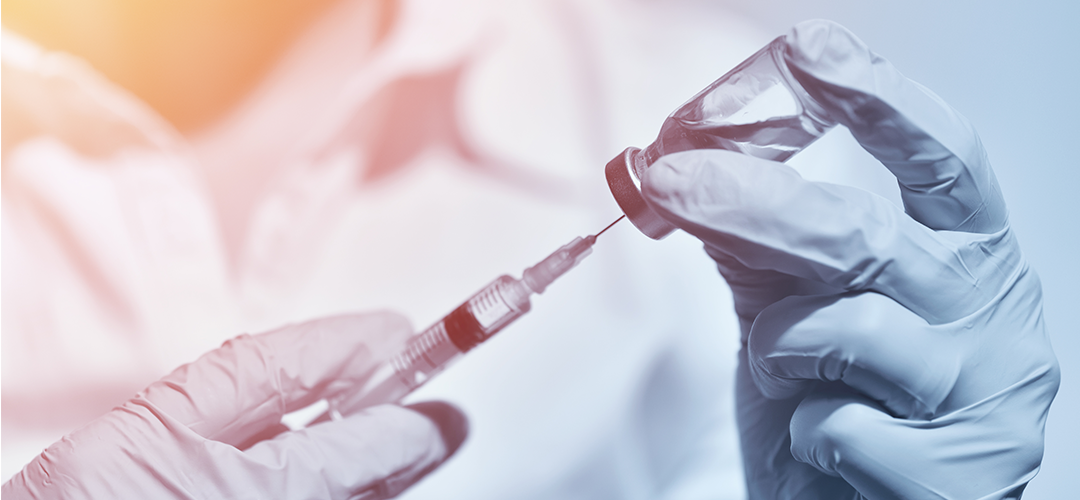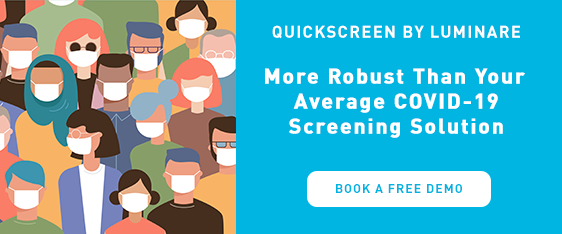
Why You’ll Still Need Syndromic Surveillance Once The COVID-19 Vaccine Is Available
By: Dr. Sarma Velamuri, M.D., Natalie Cheng
With the glimmering news of having a COVID-19 vaccine soon, people are starting to feel more hopeful for a path back to the new normal. While we wait, we will have to continue doing what we’ve been doing and stay vigilant – wearing masks, social distancing, washing our hands/practicing good hygiene, and hosting events outdoors. Businesses will need to continue to screen essential workers with a syndromic surveillance system in order to stay safe. Once the COVID-19 vaccine is available, will it work? Will we still need syndromic surveillance?
Vaccine Efficacy
When the COVID-19 vaccine is finally available, it is important to continue syndromic surveillance even though the person has received a vaccine because we don’t know the efficacy or effectiveness of it.
If we were to use the flu shot as an example of vaccine efficacy, we can see that “recent studies show that flu vaccination reduces the risk of flu illness by between 40% and 60% among the overall population during seasons when most circulating flu viruses are well-matched to the flu vaccine.” Various factors influence how well the vaccine works. According to the CDC, “at least two factors play an important role in determining the likelihood that a flu vaccine will protect a person from flu illness”:
1) characteristics of the person being vaccinated (such as their age and health)
2) the similarity or “match” between the flu viruses the flu vaccine is designed to protect against and the flu viruses spreading in the community.
Since influenza is a highly infectious airborne disease and has caused tens of millions of deaths, vaccines are an important strategy to decrease the effects of it. According to the Journal of Preventative Medicine and Hygiene, “the recurring mutations of influenza strains has prompted the recent introduction of a quadrivalent inactivated vaccine. In the near future, scientific research will strive to produce a long-lasting universal vaccine containing an antigen that will offer protection against all influenza virus strains.”
It’s important to note that the flu vaccine doesn’t prevent you from catching the flu. Rather, it prevents you from dying from catching the flu. People can still catch the flu and infect others while not having bad outcomes for themselves. Thus, getting a vaccine is important, but syndromic surveillance is here to stay. Nobody knows at a population level at the time of this writing whether or not the SARS-CoV-2 vaccine will prevent infections completely or only decrease mortality.
In order to determine the efficacy of the COVID vaccine in large populations, you must know which vaccine a person received, when they got it, and then follow up and make sure they don’t catch the infection. Syndromic surveillance will be useful to get mass vaccine efficacy data as close to real time as possible.
Distributing the Vaccine
Historically, mass vaccinations that have been performed don’t take place within a clinic. There are different models. For example, the community-based model is where someone goes door to door or sets up a mobile vaccine drive at major health centers such as hospitals or employer locations.
We are hopeful that there will be channels such as the federal government or nonprofits that allow for funding for vaccine distribution even among people without insurance and others that may not be able to easily access a vaccine. Large corporations may be willing to donate vaccines. For example, for every vaccine that their employees get, the company will donate a vaccine to someone who is unable to get the vaccine.
Employers will likely start requesting for employees to self-report vaccination status to be able to assess employee risk especially in the healthcare industry. While the CDC and public health agencies might not mandate employee vaccination tracking status, other licensing authorities such as the Department of Health might mandate vaccination for people who take care of the immunocompromised.
There is a light at the end of this pandemic tunnel. Once a COVID-19 vaccine is created and distributed, time will only tell its efficacy. Remember to continue monitoring symptoms and to use syndromic surveillance tools to keep your community safe.
To learn more about syndromic surveillance tools, please reach out to us.


